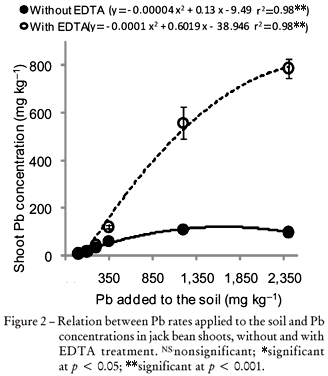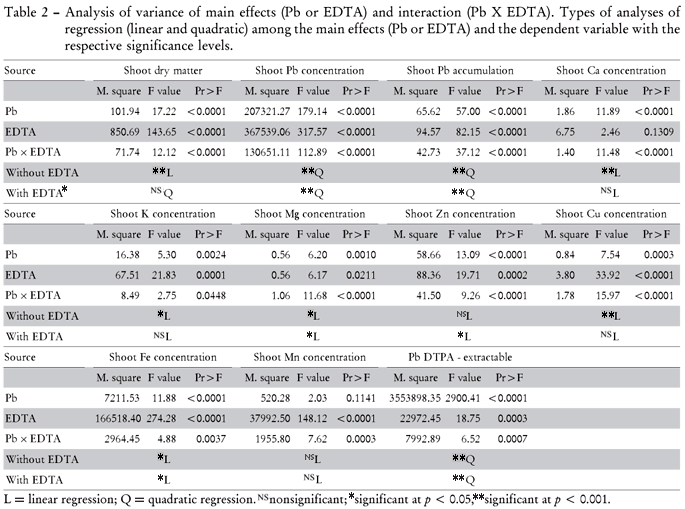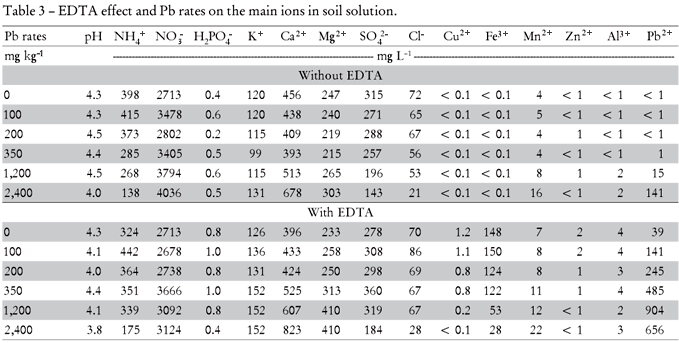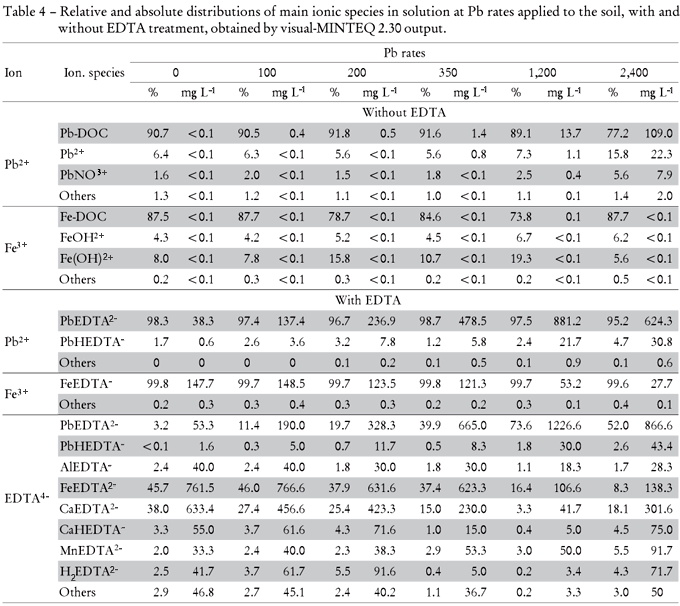A greenhouse study was conducted to evaluate the effects of ethylenediamine tetraacetic acid (EDTA) addition to soils on the lead (Pb) phytoextraction potential of jack beans (Canavalia ensiformis L.). In a pot experimentSoil samples (dystrophic Rhodic Hapludox) were treated with six Pb rates (0, 100, 200, 350, 1,200, and 2,400 mg kg-1 soil) applied as Pb(NO3)2 without and with EDTA application (0 and 0.5 g kg-1, respectively). Lead, Cl-, NO3-, NH4+, SO4(2-), H2PO4-, Zn2+, Cu2+, Fe3+, Al3+, Ca2+, Mg2+, K+ and DOC (dissolved organic carbon) concentrations obtained in a saturation soil extract (soil:water ratio of 1:0.3) were used for Pb speciation by means of the software Visual-Minteq 2.30. Soil Pb-availability was assessed with Diethylene triamine pentaacetic acid (DTPA) extraction. EDTA treated soils showed higher Pb (as PbEDTA2-), and Fe (as FeEDTA-) concentrations in soil solution leading to higher uptake of these elements by the jack bean. On the other hand, it decreased the concentration of stable complexes as Pb-DOC and Fe-DOC. EDTA also induced better nutrition to plants building up the concentration of non target metals (Ca, K, Mg, Zn, Cu, Fe and Mn) in shoots. Shoot dry matter yield remained constant even at the highest Pb rates after EDTA treatment. Jack bean can be considered as a potential Pb-phytoextractor. In addition, the DTPA solution was effective to assess Pb availability to the plants at all applied Pb rates.
ionic speciation; phytoextraction; soil pollution; soil solution; chelate










